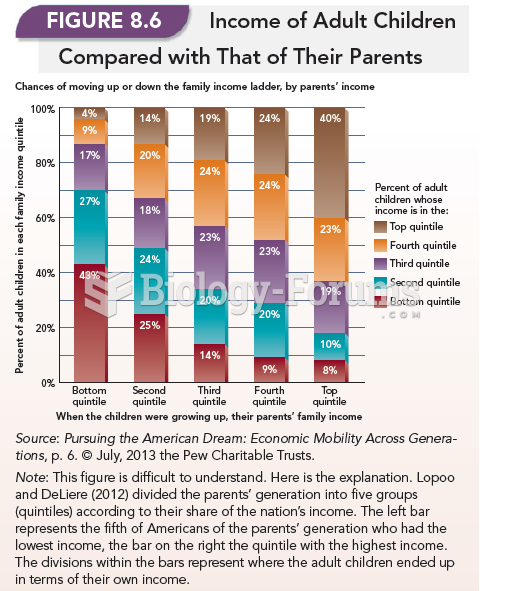Answer to Question 1
Diet and physical inactivity are the two strongest environmental factors explaining why children are heavier today than they were 40 or so years ago. As the prevalence of childhood obesity throughout the United States has more than doubled for young children and more than tripled for children 6 to 11 years of age and adolescents, the society our children live in has changed considerably. In many families today, both parents work long hours outside the home; more emphasis is placed on convenience foods and foods eaten away from home; sedentary activities such as watching television and playing computer games occupy much of children's free time; and opportunities for physical activity and outdoor play both during and after school have declined. All of these factorsand many othersinfluence children's eating and activity patterns.
Television watching may contribute most to physical inactivity. Children 8 to 18 years of age spend an average of 4.5 hours per day watching television. A child who spends more than an hour or two each day in front of a television, computer monitor, or other media can become overweight even while eating fewer kcalories than a more active child. Playing sedentary video games influences children's activity patterns similarly. Children who have television sets in their bedrooms spend more time watching TV, spend less time being physically active, and are more likely to be overweight than children who do not have televisions in their rooms. Children who watch a great deal of television are most likely to be overweight and least likely to eat family meals or fruits and vegetables. They often snack on the nutrient-poor, energy-dense foods that are advertised.
The average child sees approximately 12 television food ads each daymany peddling foods high in sugar, saturated fat, and salt such as sugar-coated breakfast cereals, candy bars, chips, fast foods, and carbonated beverages. More than half of all food advertisements are aimed specifically at children and market their products as fun and exciting. Not surprisingly, the more time children spend watching television, the more they request these advertised foods and beveragesand they get them about half of the time. The most popular foods and beverages are marketed to children and adolescents on the Internet as well, using advergaming (advertised product as part of a game), cartoon characters or spokes-characters, and designated children's areas. Food marketing to children, including TV ads and Internet ads, as well as marketing in local communities by way of store giveaways, restaurant promotions, school activities, and sporting events, has a profound effect on children's nutrition and health. Despite initiatives by the food industry to answer public health concerns about child-targeted advertising, much remains to be done to reduce the marketing of unhealthy foods to children.
The physically inactive time spent watching television (and playing video and computer games) is second only to time spent sleeping. These activities use no more energy than resting, displace participation in more vigorous activities, and foster snacking on high-fat foods. Compared to sedentary screen-time activities, playing active video games does expend a little more energy, but not enough to count toward the daily 60 minutes of moderate-to-vigorous physical activity recommended for children.
Simply reducing the amount of time spent watching television (and playing video games) can improve a child's BMI. The AAP recommends no television viewing before 2 years of age and thereafter limiting television and video time to 2 hours per day as a strategy to help prevent childhood obesity.
Answer to Question 2
Both short-term and long-term hunger exert negative effects on behavior and health. Short-term hunger, such as when a child misses a meal, impairs the child's ability to pay attention and to be productive. Hungry children are irritable, apathetic, and uninterested in their environment. Long-term hunger impairs growth and immune defenses. Food assistance programs such as the WIC program and the School Breakfast and National School Lunch Programs are designed to protect against hunger and improve the health of children.
A nutritious breakfast is a central feature of a diet that meets the needs of children and supports their healthy growth and development. Children who skip breakfast typically do not make up the deficits at later mealsthey simply have lower intakes of energy, vitamins, and minerals than those who eat breakfast. Malnourished children are particularly vulnerable. Children who eat no breakfast are more likely to be overweight, perform poorly in tasks requiring concentration, have shorter attention spans, and achieve lower test scores than their well-fed peers. Common sense dictates that it is unreasonable to expect anyone to learn and perform without fuel. For the child who hasn't had breakfast, the morning's lessons may be lost altogether. Even if a child has eaten breakfast, discomfort from hunger may become distracting by late morning. Teachers aware of the late-morning slump in their classrooms wisely request that midmorning snacks be provided; snacks improve classroom performance all the way to lunchtime.







